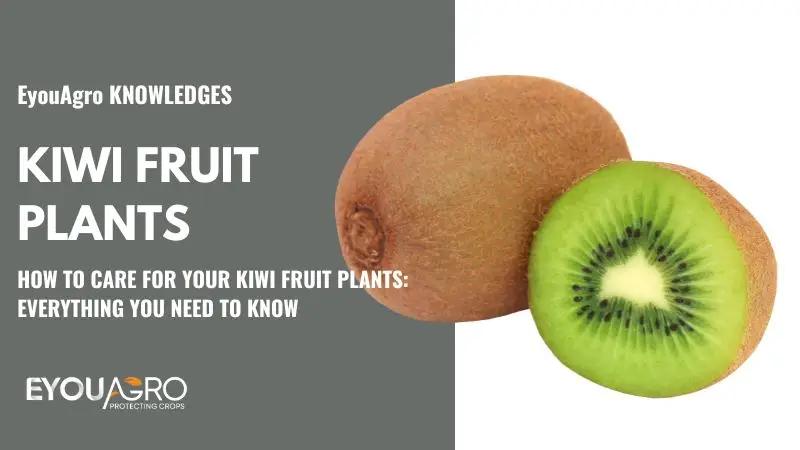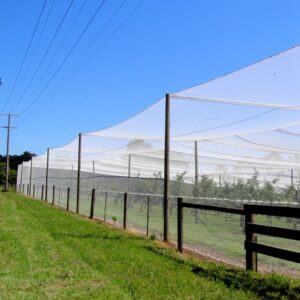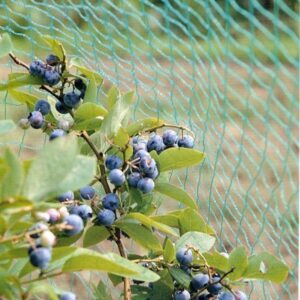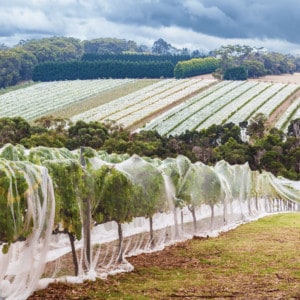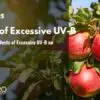Kiwi fruits are tropical fruit that has edible green skin and white flesh inside. You can eat them raw, in smoothies, or even as part of the main dish. To enjoy their full flavor Kiwi should be stored at room temperature so they don’t get too cold.
Kiwi fruits are native to New Zealand and grow on vines. According to Statista, global Kiwi production is 4.35 million metric tons in 2020. Kiwi plants can produce up to 200 fruit in a season with the most popular variety being green Kiwis. They are rich in
- Antioxidants
- Fiber
- Vitamins C and E
- Potassium
- Copper
- Zinc
- Folate
Kiwis need warm weather. So, you can grow them outdoors in your backyard or greenhouse if you live in colder areas of the world. Before learning how to care for your Kiwi fruit plants, let’s look at the types of Kiwi fruits.
Types of Kiwi Fruit
The Kiwi fruit comes in about 50 different varieties. Your climate zone will determine the type of plant that you cultivate in your landscape. Also, your growing space plays a considerable role in determining what type of Kiwi fruit you grow. Some vines can reach a height of 40 feet, necessitating a lot of framework and room.
The four most cultivated types are:
- Arctic
- hardy,
- Fuzzy
- hairless
Each type of Kiwi plant has different features. For example, some plants are frost-resistant and others have a lot of flavors. It is important to choose the plants that match your area and what you want in taste and size.
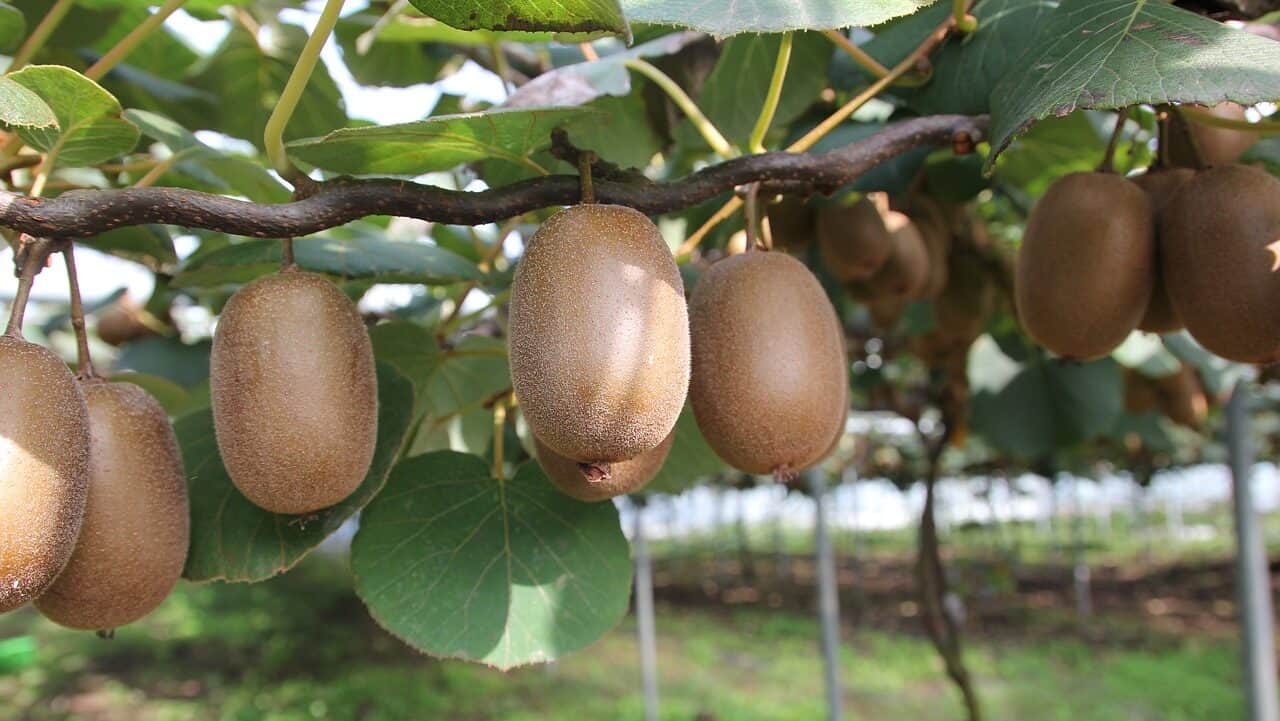
Benefits of Kiwi Fruit
- They are highly concentrated in vitamin C and other antioxidants compared to other types of fruits.
- Eating Kiwi fruit frequently helps prevent plaques and deposition in the artery walls, which protects against cardiovascular disease.
- Kiwis are rich in dietary fiber, which aids digestion and binds and eliminates impurities from the colon, reducing the risk of colon cancer.
- Kiwifruit comprises the amino acid arginine, a well-known stimulant that you can use to improve male impotence. It’s also high in zinc, which boosts testosterone levels in men.
- Kiwifruit is a rich source of folic acid, vital for a healthy pregnancy and baby and for preventing congenital disabilities.
- Kiwifruit contains a wide range of antioxidants that can help to slow down the effects of aging in the body.
- Consuming Kiwi fruit prevents hair loss and also escalates hair growth.
Now that you know the benefits of consuming Kiwi fruits, let’s learn how to care for your Kiwi fruit plants.
How to Care for Your Kiwi Fruit Plants
Caring for the Kiwi fruit plant is not difficult. Here are some things to note when planting.
Positioning the Kiwi Fruit Tree
Kiwi fruits thrive in a shady, sunny location, particularly against a south- or west-facing wall. However, you can also plant in the open in temperate climates.
In the spring, sprouts are especially prone to frostbite. They may need to protect with horticultural wool or old net curtains. The most effective protection to use would be the hail net.
Install a Support System
Installing a support system before or shortly after planting is vital because the Kiwifruit needs a robust and permanent structure to support its fruit-laden vines.
The simplest and cheapest approach to help Kiwifruit is to use a T-bar trellis system. T-post trellis systems are parallel posts connected by rows of solid wire.
Soil
The Kiwi plant thrives in soil that is rich in organic matter, fertile, and well-drained. Spring is the best season to plant because the earth and the weather are both warming up. Kiwi plants grow best in mildly acidic soil but will grow in neutral soil as well.
Apply Fertilizer in early March in bare soil, followed by a few regularly spaced further treatments during the growing season.
Water
You won’t have to water your Kiwi after the first year of growth unless you live in a region where irrigation is necessary for average plant growth.
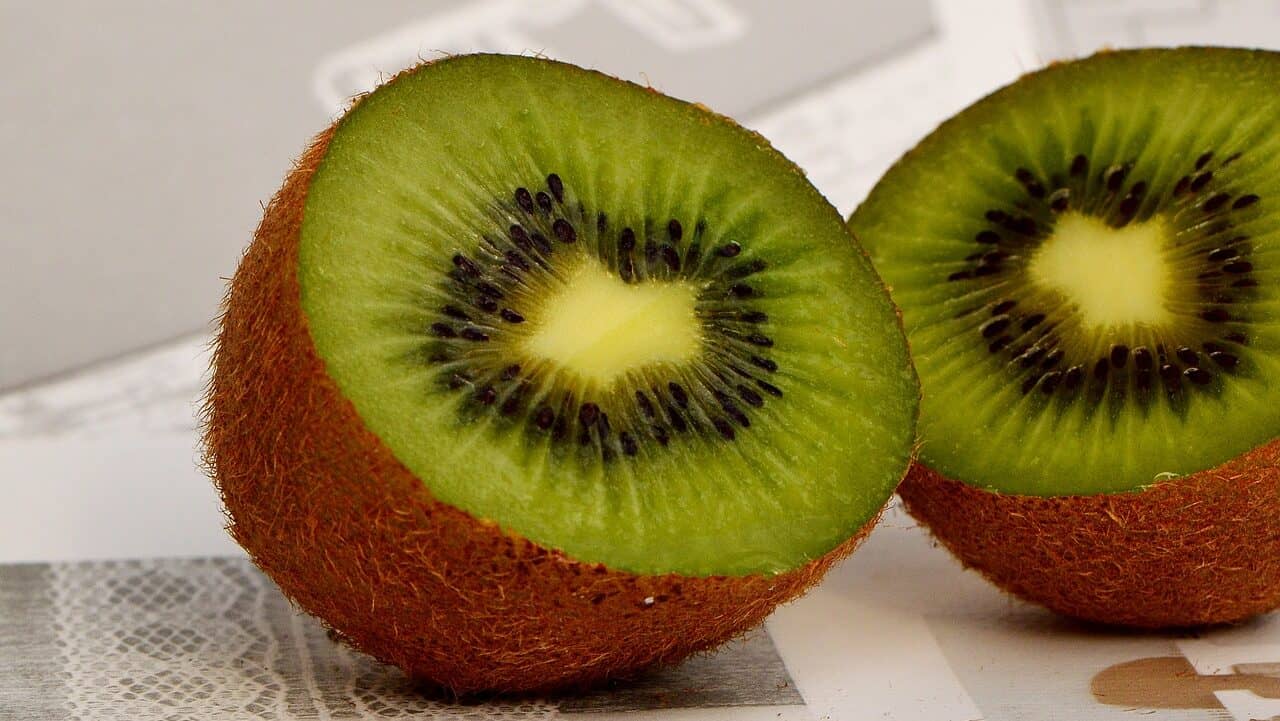
Propagating
Select softwood with a width of around 12 inches and a length of 5-8 inches for each cutting. Snip softwood shoots right below the leaf intersection from the Kiwi. Remove the leaves from the bottom part of the cutting, leaving one at the top node.
Insert the cutting in a rough rooting media or equal parts perlite and vermiculite after dipping the basal end in root length hormone. Keep the rooted Kiwi clippings moist and in a warm place with a sprinkling system, ideally a greenhouse.
In six to eight weeks, you should be able to see the roots of the cuttings.
Pruning
Pruning during the dormant season helps keep your Kiwi plant healthy. On the other hand, Kiwi plants growing in the first year necessitates regular trimming to train the plant to grow upright.
Unlike many other plants, your Kiwi plant vines will need to be pruned frequently throughout the summer. In the summer, eliminate any shoots that may develop on the mature wood and trunk and any entwined projections.
Make it a regular activity to remove any water sprouts (vigorous shoots emerging from aged wood) and shoots from the trunk. When the plant is inactive during winter, it is the ideal time to prune the female vine. After the male vines have bloomed, prune them in the early summer.
Reflective Ground Screen
If you’re thinking about planting a kiwi fruit tree, you should consider creating a reflective ground cover. This can be done by laying down sheets of aluminum foil or other reflective material around the base of your kiwi plant. Doing this will help to increase the amount of light that reaches your plants. This will make your kiwi grow bigger and sweeter.
Related Posts
Protect Your Kiwi from Harsh Weather, Pest, and Diseases
Weather
Weather elements such as hail and frost can pose a significant threat to your Kiwi plants. The damage caused can be heavy if the temperature is very cold. The leaves become stiff and break off. Frost cloth can save you the damage from the frost.
Birds
You should control birds in Kiwi orchards, particularly at bud burst. Birds such as Finch and Silvereyes can cause trouble. If you lose Kiwi flower buds to birds it can be devastating to your orchards. You can use fruit bird netting.
Red Spider
The red spider mite is an insect that feeds on plant sap, diminishing its vitality, and it’ll probably find suitable habitat in Kiwi. The great news is that natural solutions like nettle slurry can help remove the bug without causing crop damage.
Neck Rot
Fungi that settle in the lower section of plants create root and top rot, also called root and crown rot. You can avert damages by using preventive fungicides in the early spring, as the fungus is challenging to eliminate once it has appeared.
Harvesting
Although the Kiwi fruit reaches full size in August, it is not ready to be harvested until late October or early November, when the seeds have turned black and the sugar content has increased.
Industrial Kiwi picking occurs all at once. The home gardener may also be picking Kiwi inconsistently beginning in late September. The tenderness of the Kiwi fruit isn’t always a good sign of when it’s ready to eat. Kiwi ripens after you pluck it has from the vine, unlike certain fruits.
Storage
You can store Kiwi fruit in various methods, each affecting the length of time you can preserve. An average green Kiwifruit will last for about:
- A week once ripe
- 2 to 3 days at room temperature
- Refrigerate for 5-7 days
Kiwi fruit can last in the freezer for roughly a year. You can keep a properly frozen Kiwi fruit for much longer than a year.
Conclusion
Tell me what you eat and I will tell you what you are. Kiwi is a nutritional powerhouse. No question about it. When compared to 27 other fruits, the Kiwi fruit has the highest nutrient content. It has double the amount of Vitamin C compared to regular oranges (per 100 mg) and doubles the number of nutrients in comparison with apples. Care for your Kiwi fruit plants and kiss sickness and ailments goodbye forever.
If you’re looking for the best strategies and tips to grow and care for your Kiwi fruits, look no further because Eyouagro got your back. Orchard netting can regulate the microclimate and provide the climatic conditions required for the growth of fruit trees.
We have agriculture fruit covers to keep insects, birds, and harsh weather away, as they can damage your Kiwi plants. Grab this calculator to estimate the quantity of the Kiwi netting you require here.
We also provide a variety of netting accessories to meet your needs. Our main goal is to make farmers’ lives easier and assist them in taking care of their crops.
If you want to know more information or make an inquiry, visit our website at EyouAgro or send us an email at info@eyouagro.com.

